W5 - Drought
1/24
There's no tags or description
Looks like no tags are added yet.
Name | Mastery | Learn | Test | Matching | Spaced |
|---|
No study sessions yet.
25 Terms
Defining Drought
no universal definition: depends on displinary perspective (hydrology, meterology, agriculture, sociology)
Examples:
BoM: prolonged abnormally dry period with insufficient water to meet normal use.
IPCC-linked definitions: periods of below-average moisture leading to hydrological imbalance and negative ecological/economic impacts
Common features:
Occur over specific time periods (not permanent).
Related to dryness and water deficiency.
Associated with negative ecological and economic impacts.
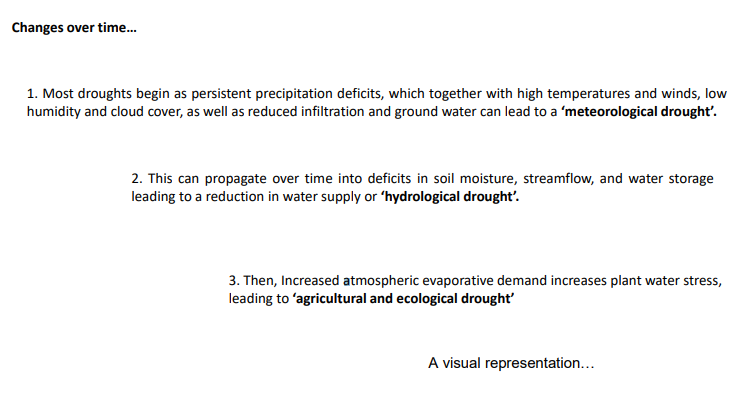
Changes over time
IAMGE
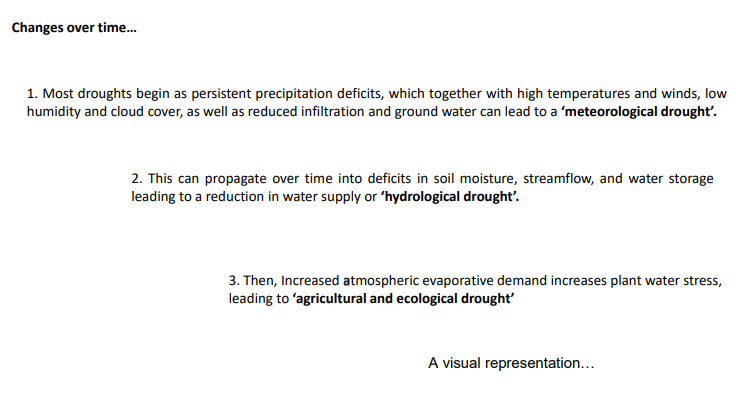
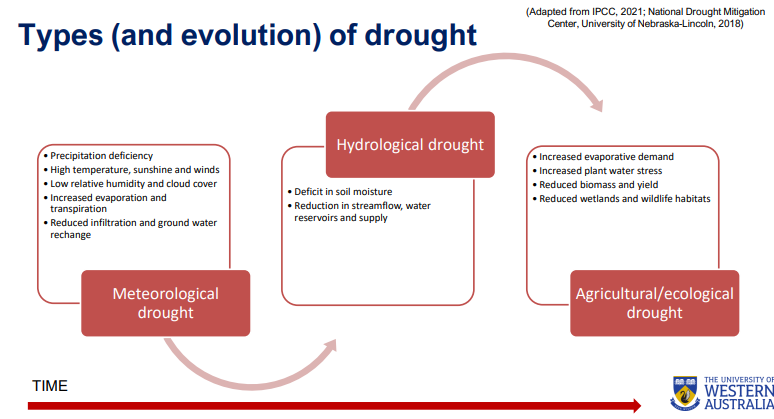
Types and Evolutions of Drought
Meteorological drought: reduced precipitation, often worsened by high temperature, wind, and evaporation.
Hydrological drought: deficits in soil moisture, rivers, reservoirs, and groundwater.
Agricultural/Ecological drought: plant water stress, reduced yield, habitat and biodiversity impacts
Transcript adds: droughts often propagate—starting with rainfall deficiency and spreading into wider ecological and social effects
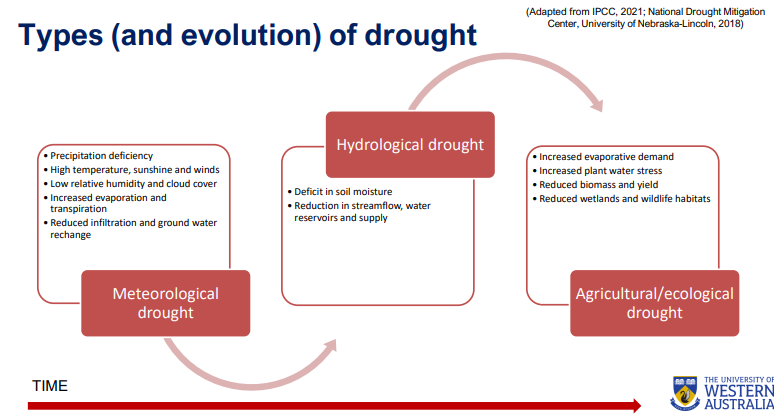
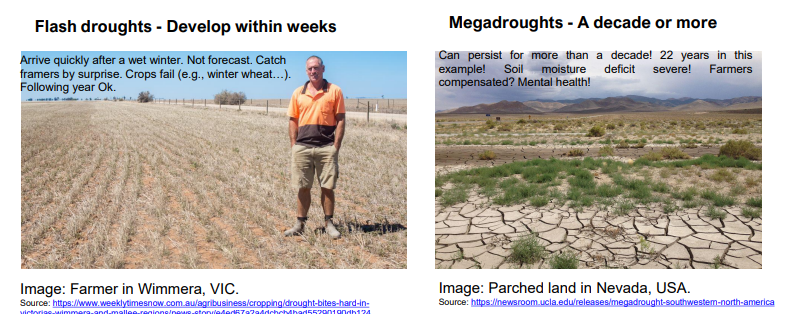
Variants of Drought
Flash droughts: develop quickly, e.g. after wet winters when crops suddenly fail due to a dry spring. Farmers are “caught by surprise.”
Megadroughts: persist for a decade or more, causing long-term soil moisture deficits and severe community stress
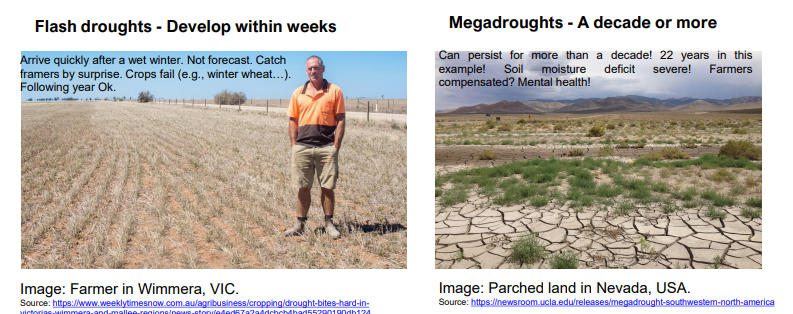
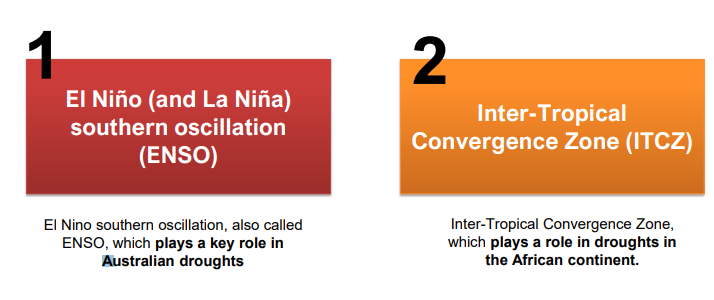
Drought as a Natural Phenomenon
DRIVERS
El Niño Southern Oscillation (ENSO):
El Niño → hotter, drier conditions in Australia, greater drought risk.
La Niña → wetter, cooler conditions, higher flood risk.
Transcript: ENSO strongly linked to drought cycles in Australia
Inter-Tropical Convergence Zone (ITCZ): belt of low pressure near the equator that drives wet/dry seasons (monsoons).
Indian Ocean Dipole and Circumpolar currents: interact with ENSO, complicating drought patterns
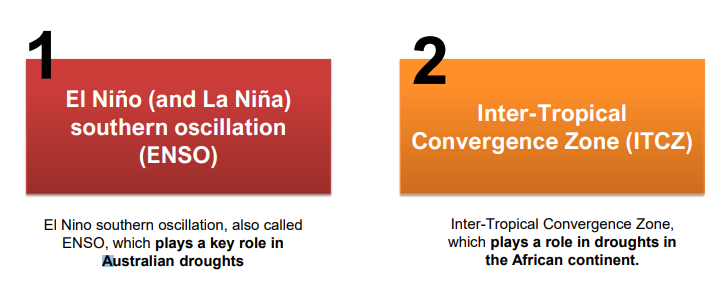
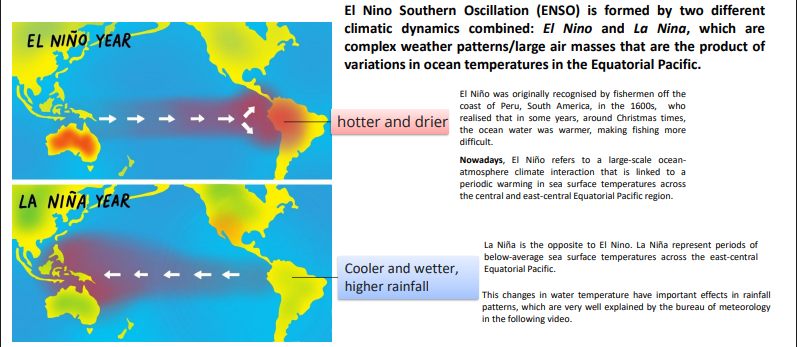
El Nino Southern Oscillation (ENSO)
IAMGE
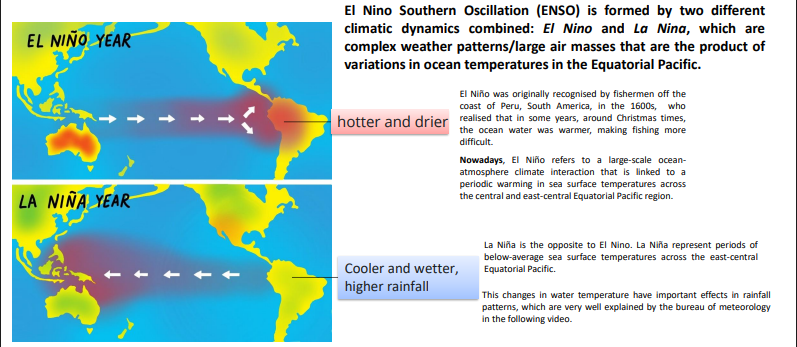
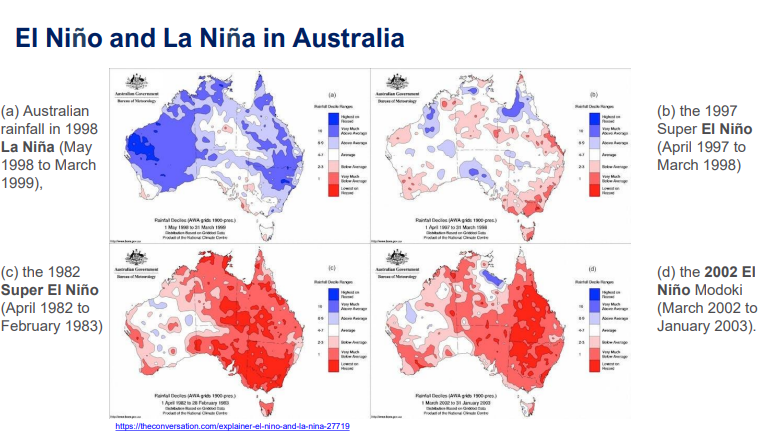
El Nino and La Nina in Australia
IMAGE
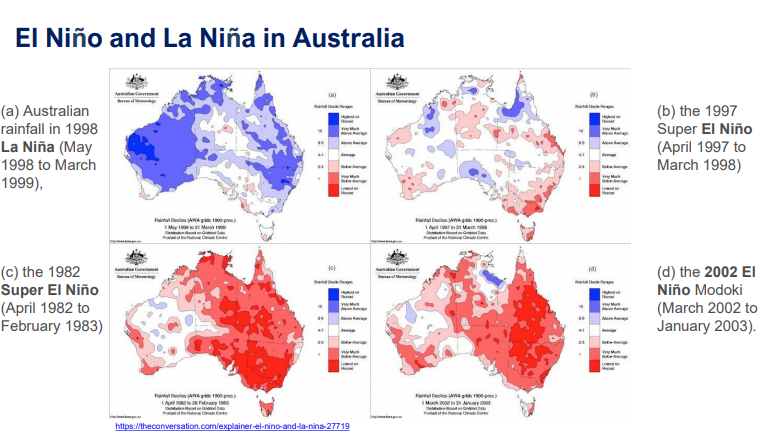
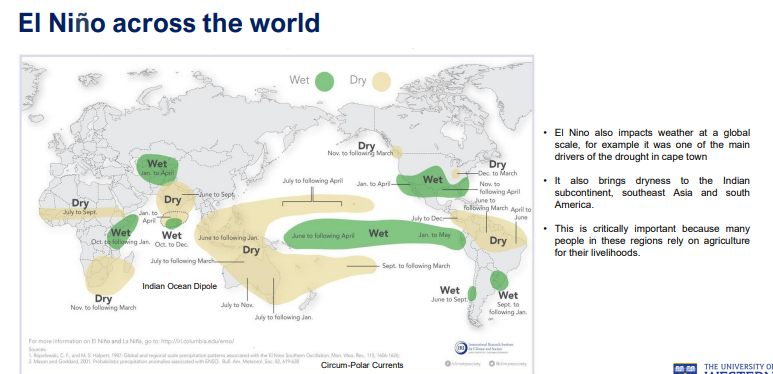
El Nino Across the World
IMAGE
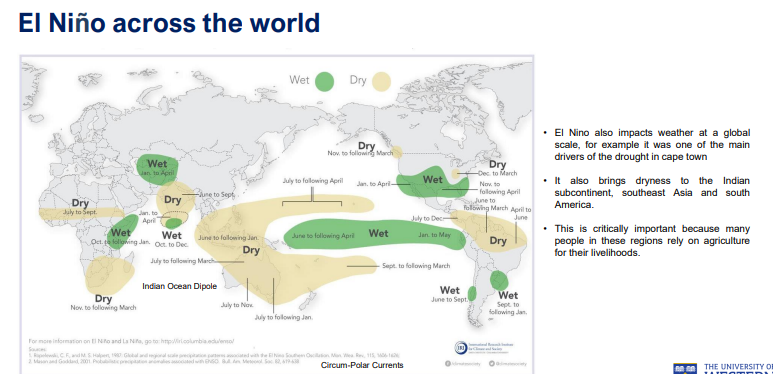
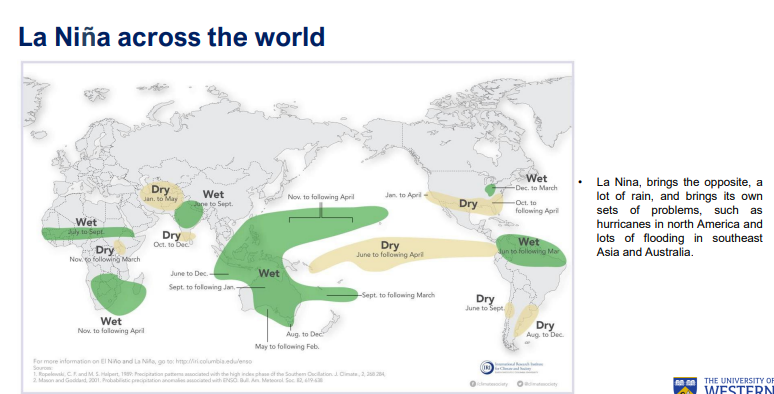
La Nina Across the World
IMAGE
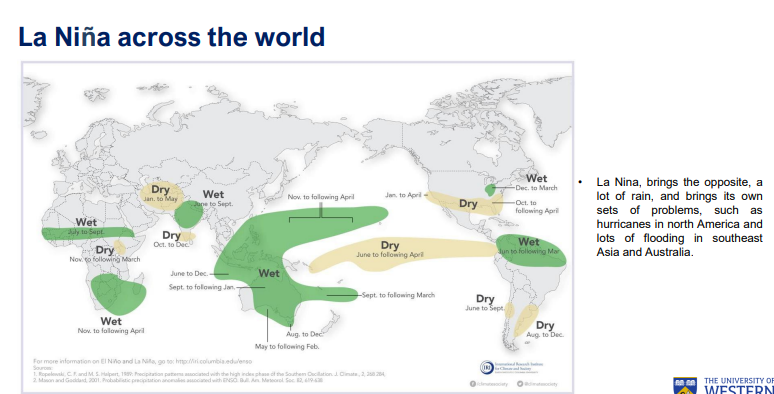
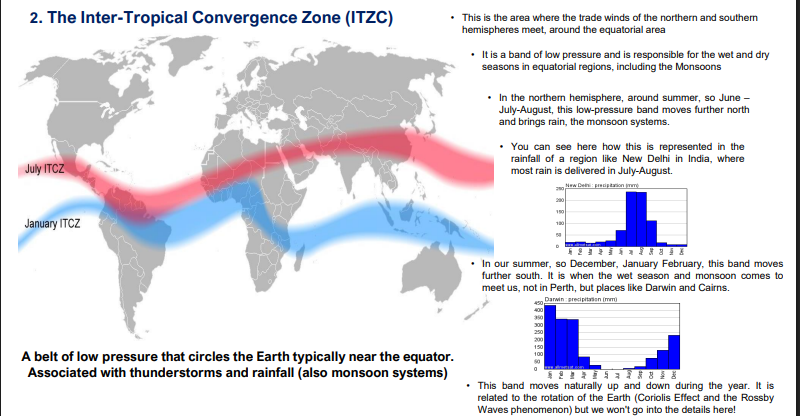
The inter-tropical convergence zone (ITZC)
Image
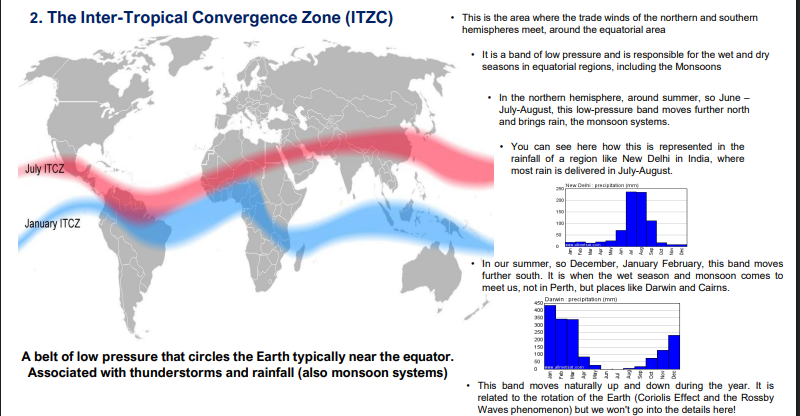
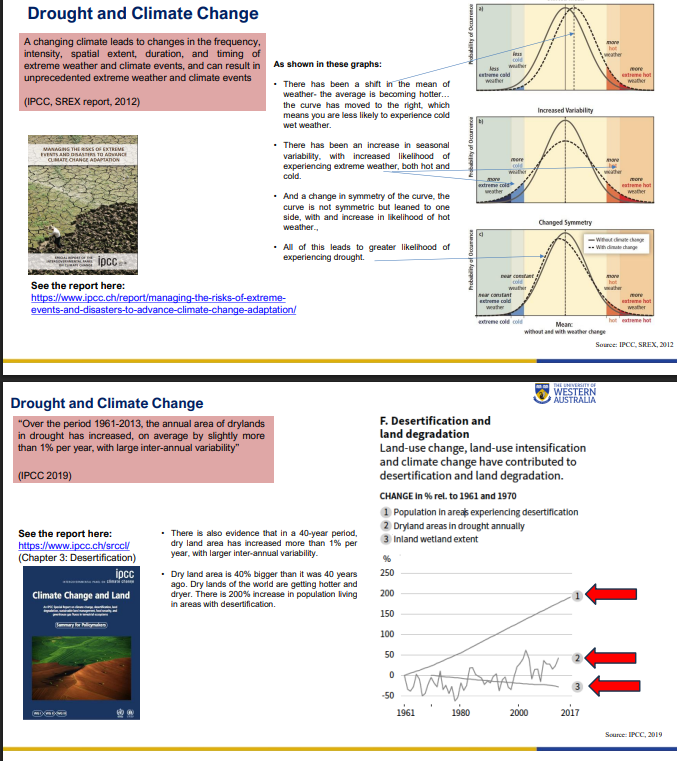
Climate Change and Drought
Climate change increases frequency, intensity, and duration of droughts
Transcript: Australia’s southwest rainfall has declined 20% since the 1970s, showing a long-term drying trend
IPCC: warmer climate intensifies both wet and dry extremes, expands dryland areas, and worsens desertification
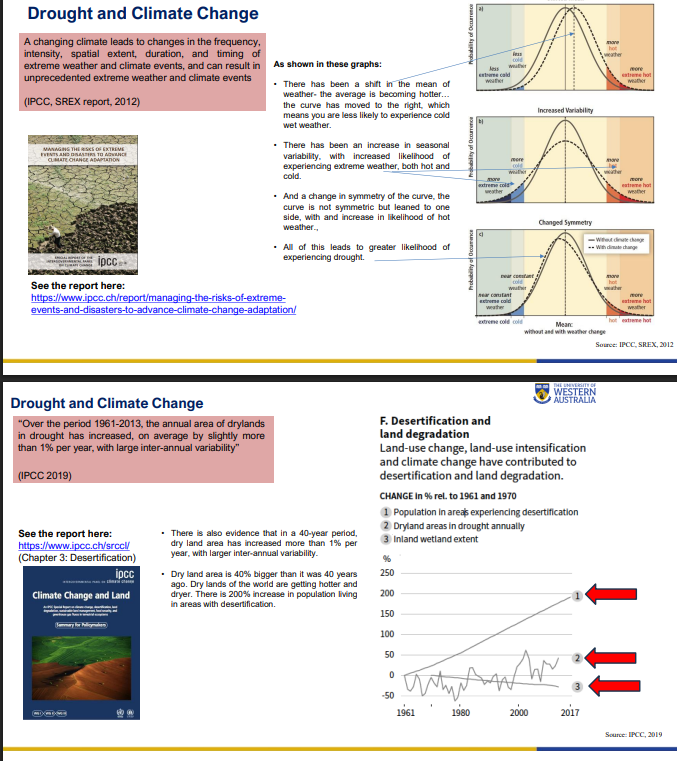
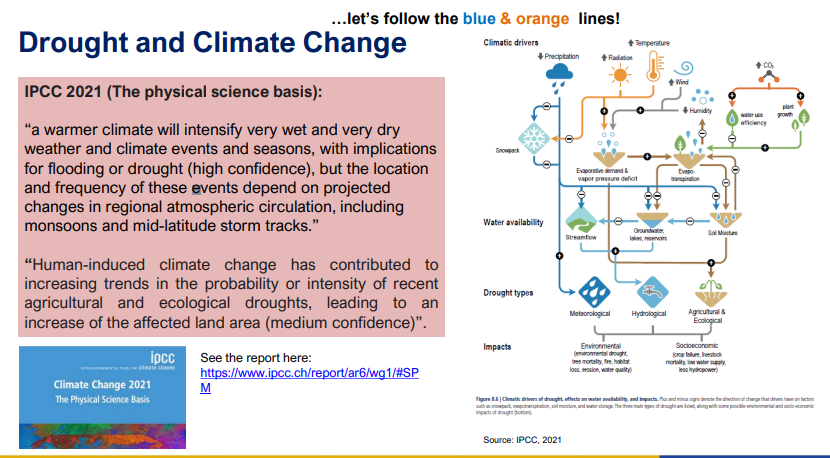
Drought and Climate Change IPCC 2021 (physical science basis)
IMAGE
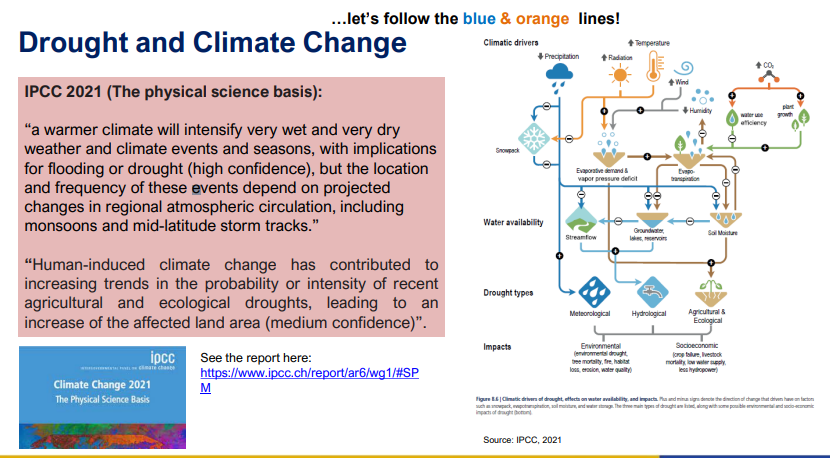
CASE STUDY - Cape Town SA “DAY ZERO” (2017-18)
3-year drought threatened water supply to city.
Dam levels dropped to 15–30%.
Severe restrictions implemented (e.g., 13 gallons/day per person)
Transcript: comparable to Perth/WA reliance on coastal cities and upstream catchments
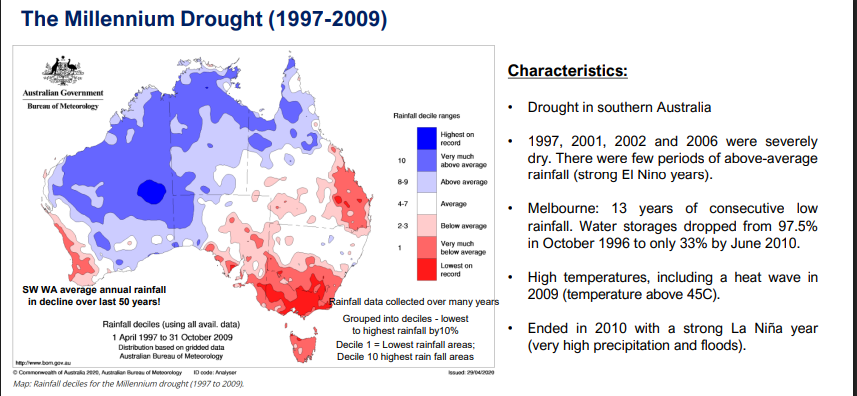
CASE STUDY - The Milennium Drought (AU 1997, 2009)
Severe drought across southern Australia.
Melbourne storages dropped from 97.5% (1996) to 33% (2010).
Ended with La Niña and flooding in 2010
Transcript: farmers celebrated rainfall after years of severe hardship
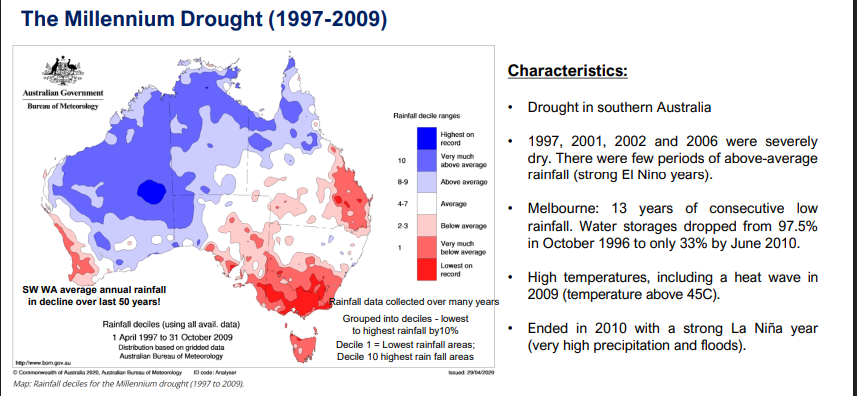
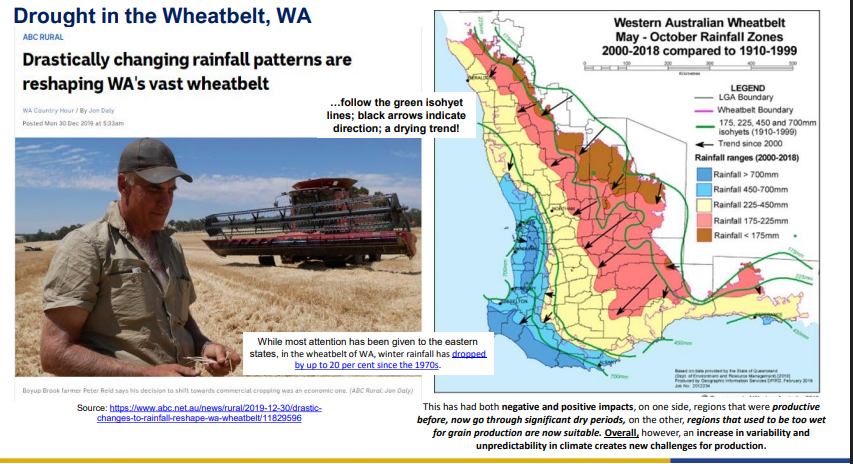
WA Wheatbelt
Rainfall dropped by 20% since the 1970s.
Negative impacts: crop failures, mental health strain.
Some wetter areas became newly productive → uneven regional effects
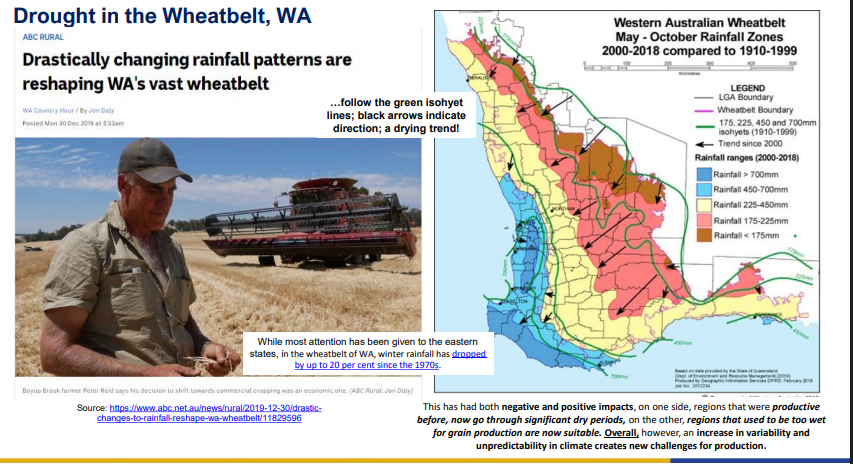
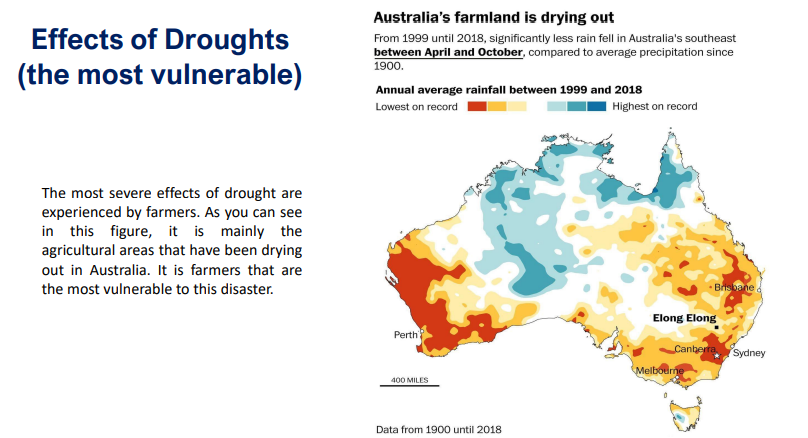
Effects of Droughts
Has Tangible and Intangible Losses
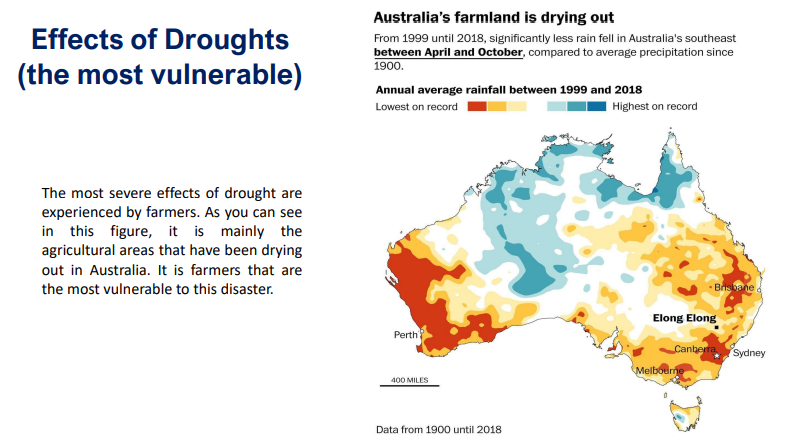
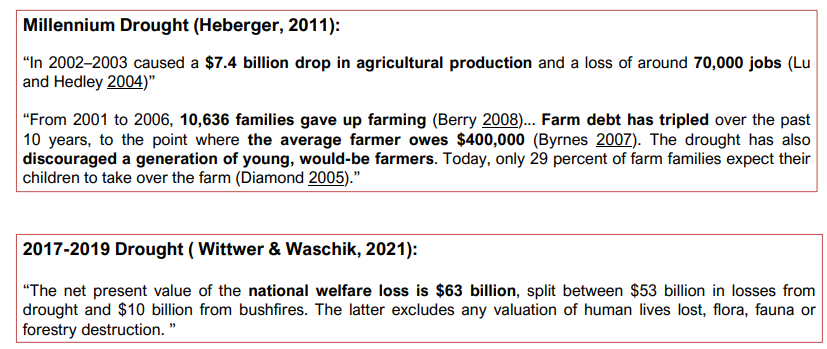
Tangible Losses
Economic:
$7.4 billion drop in agriculture, 70,000 jobs lost (2002–03)
Tripling of farm debt; many families left farming.
National welfare loss of $63 billion (2017–19 drought and fires combined).
Environmental: biodiversity loss, degraded wetlands, soil erosion
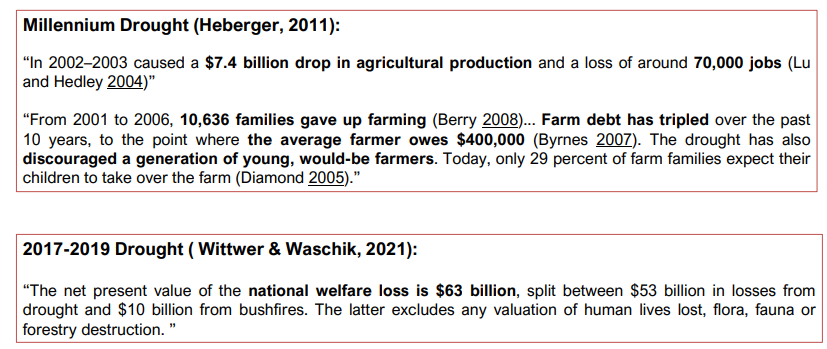
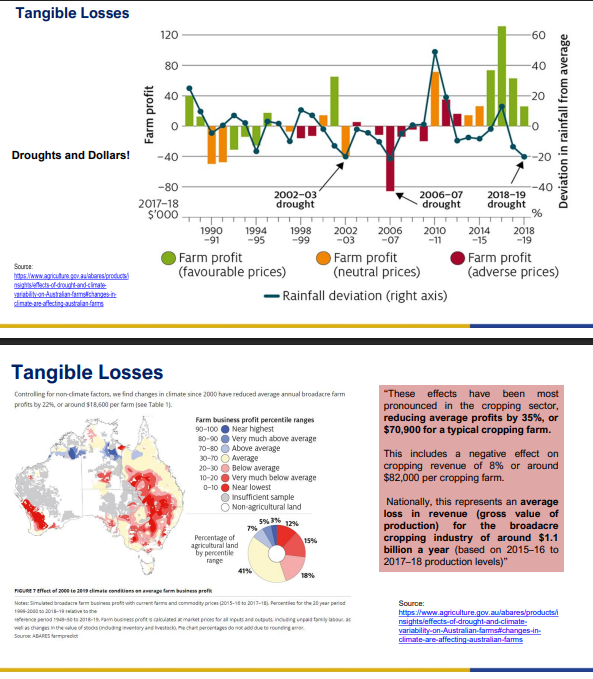
Tangible Losses Diagram
IUMAGE
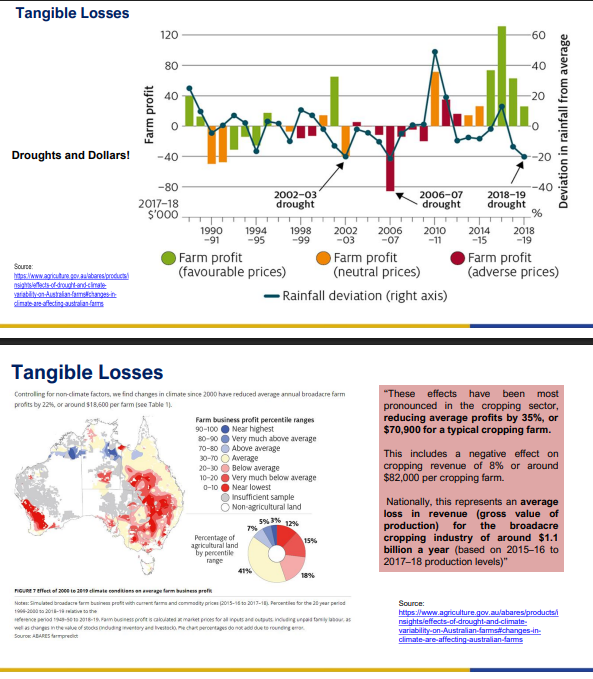
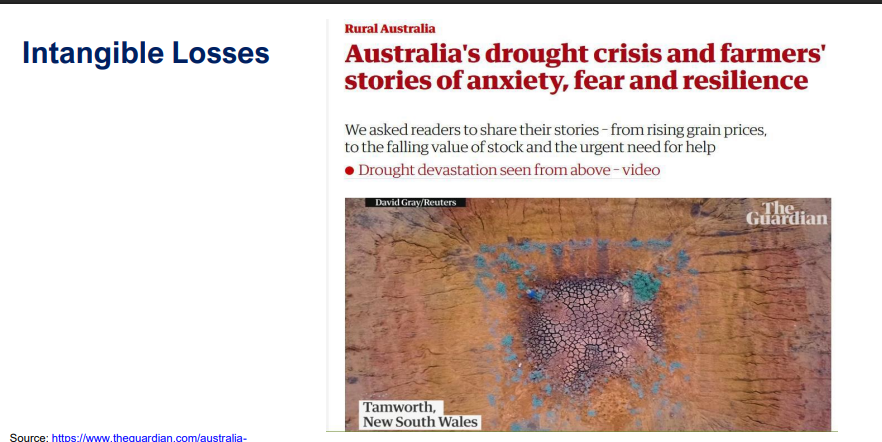
Intangible losses
Mental health: fear, anxiety, depression, even suicide risk among farmers.
Identity & dignity: failure of crops seen as “failure of the farmer” (“violation of good farmer identity”).
Sense of place: loss of attachment to land, solastalgia, distress at seeing farms erode.
Social fabric: decline of rural community life (sport, social events)
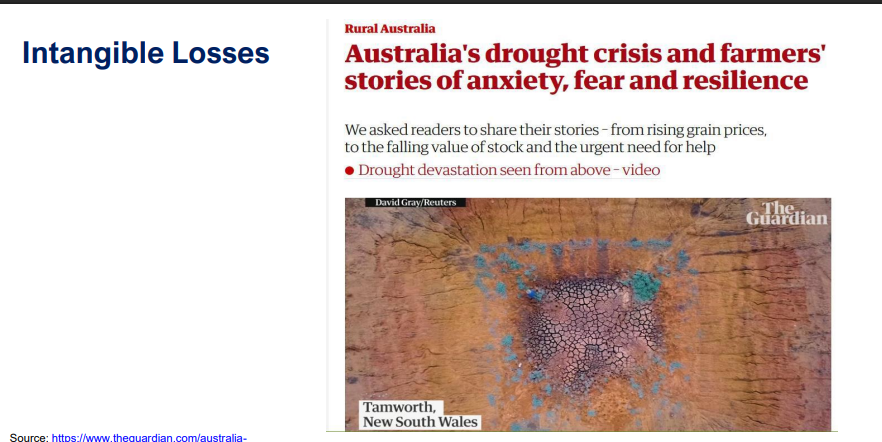

Farmer’s Well-being and mental health
'IMAGE

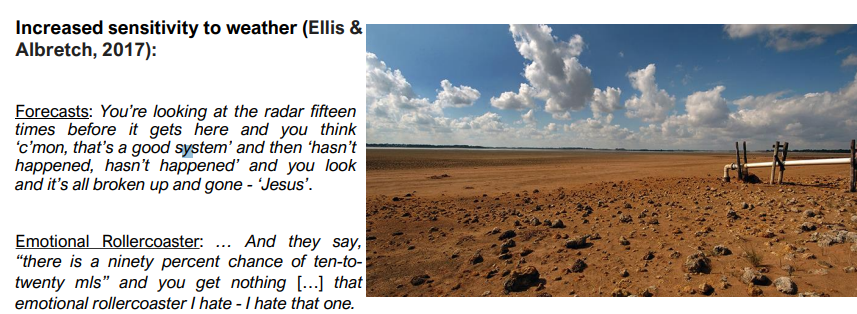
Meteroanxiety
Losing a sense of order in the world
THIS IS INTANGIBLE
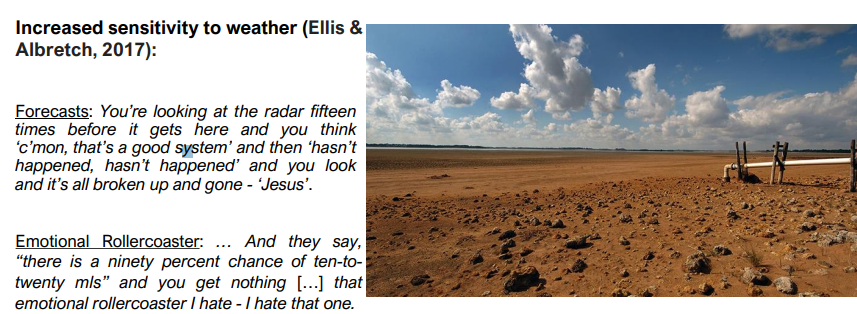
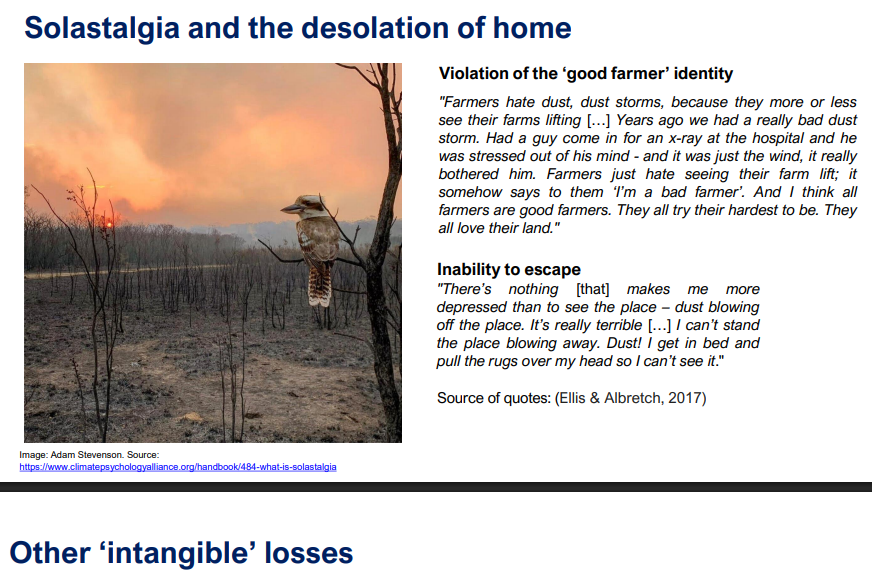
Sostalgia and the desolation of home
IMAGE THIS IS INTANGIBLE
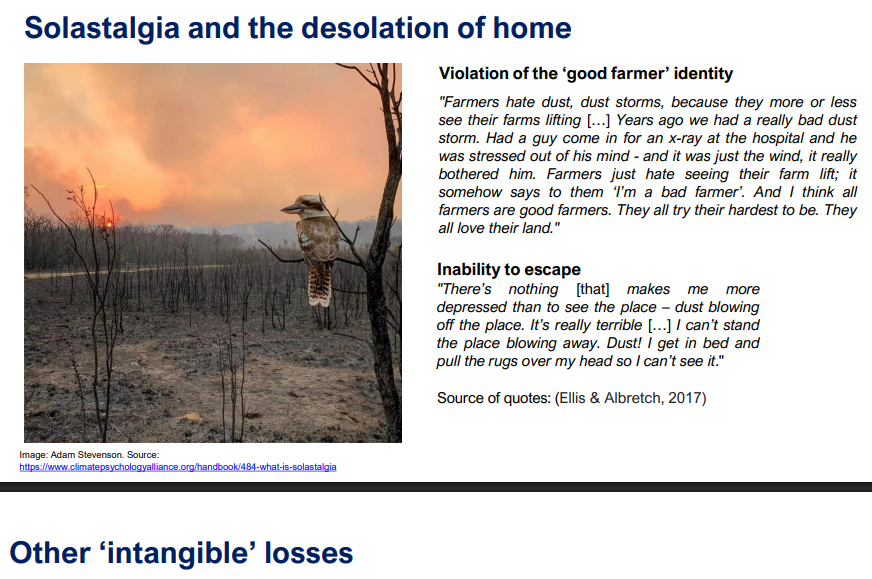
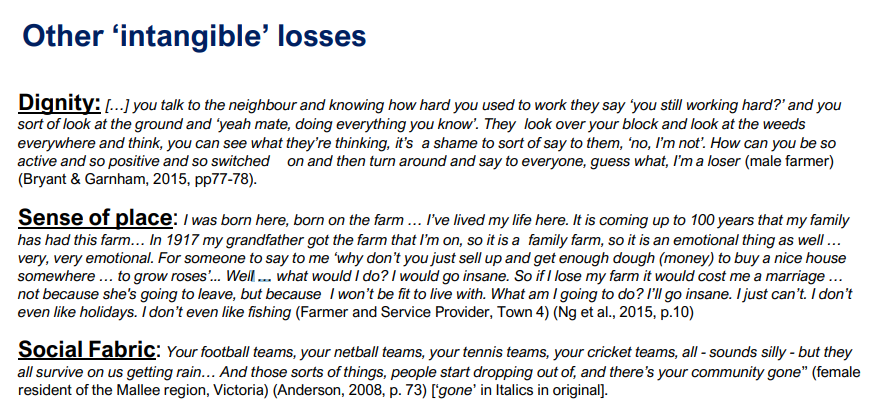
Other Intangible Losses
image
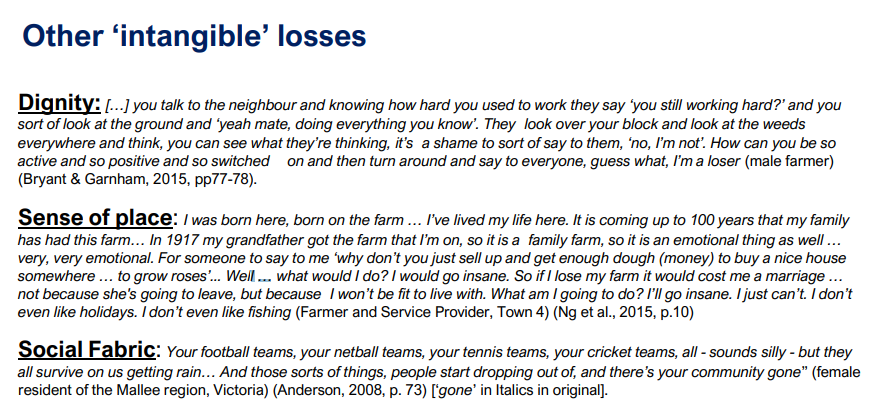
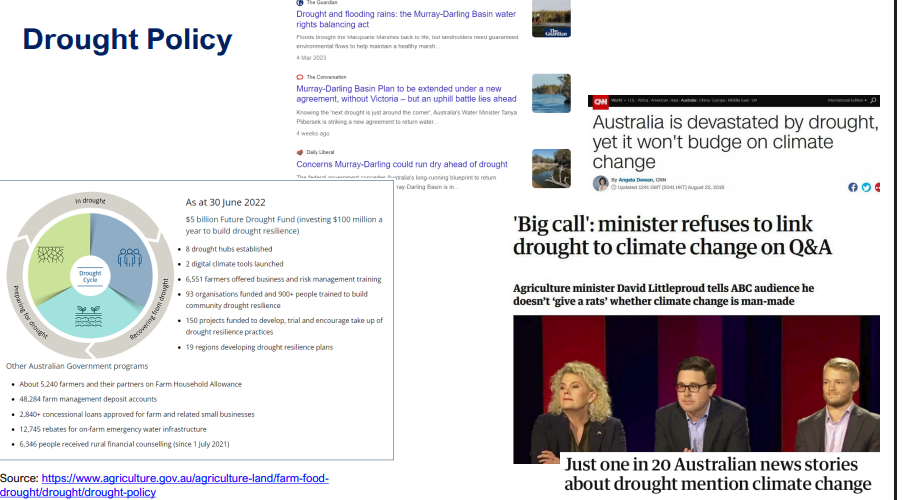
Drought Policy
IMAGE
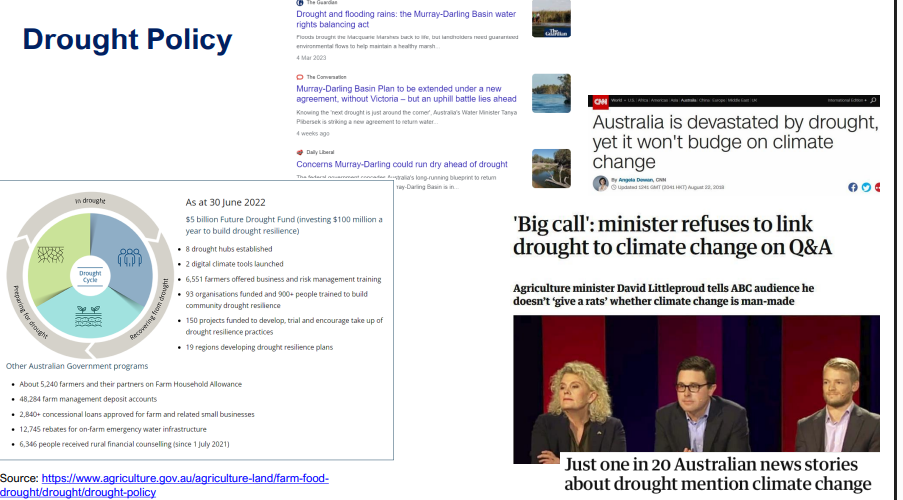
Key Takeaways
Drought is multi-dimensional: physical, ecological, economic, and social.
Multiple drivers (ENSO, ITCZ, climate change) combine with local vulnerabilities.
Impacts fall heaviest on farmers and rural communities, producing both visible economic losses and less visible psychological/social harm.
Climate change is amplifying the risks, making droughts longer, more intense, and less predictable
.
ACTUAL TAKEAWAY:
There is no one standard definition of drought - meteorological, agricultural, hydrological and sociological definitions.
These different types of droughts also evolve, and shift, dependent on conditions and longevity.
Droughts are a natural phenomenon, particularly in the arid and semi-arid regions of the world. Driven by natural climate processes (e.g. El Nino, ITCZ). •
Climate change is exacerbating drought in a number of ways, including frequency, severity, duration, and average area impacted.
While we often hear droughts discussed in terms of the tangible, often economic, losses, many of the impacts associated with drought are ‘intangible’, meaning that they are often very hard to ‘see’ or assess unless you know what it is that people value. Our attachments and links to land are often most prominently highlighted when faced with these challenges.
Concern and prevalence of such events within the media often illustrates the need for further political action on these issues.